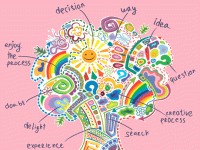Beyond the Comfort Zone: 6 Ways to Build Independent Thinking
The shift toward applying more executive function (EF) within learning and assessment will cause some discomfort in teachers and students. The transition will not eliminate the need for memorization, as automatic use of foundational knowledge is the toolkit for the executive functions. Memorization, however, will not be adequate as meaningful learning becomes more about applying, communicating and supporting what one knows.
One way you can help your students shift from blindly following instructions and memorizing single right answers is to help them recognize their successful use of executive functions throughout their learning experiences. Start by going through your units of instruction and assessments to recognize where students have previously activated their EFs so that you can review these accomplishments as they are achieved in subsequent units. As you review, keep a list of executive functions nearby, and seek opportunities in which EF activation is well suited for other units.
The end result will be a greater awareness by the students, not only for how their brains work, but also for how they can push themselves to connect what they can recall with real-world problems and opportunities they encounter.
Low-Risk Experiences Using EFs in Common Core Topics
Using your grade- and subject-appropriate topics, the following examples can be modified or serve as suggestions for building knowledge and understanding using executive functions.
You'll probably find that, in spots, you're already doing this. Regardless, the goal here is to help you recognize the EFs for your own awareness, and to support your students as they are successful in identifying and using them on their own. In doing so, they will build confidence about facing uncertainty, strengthen their growing neural networks of EFs through activation and application, and find more pleasure in the adventures of constructing knowledge.
EFs and How to Activate Them
1. Supporting Opinions
Students are paired with classmate(s) who have the same opinion on comfortable topics that do not require formal evidence. They share reasons for their opinions and select one or two that they feel are most convincing to share out in class discussion. Topics might include:
- Favorite television show
- What interpretation of an optical illusion is most evident to them (e.g. vase or two faces in profile)
- Best breed of dog for house pet
2. Prioritizing
This could be a timeline assignment in which students prioritize evidence from the text that supports the importance of a selected event.
3. Evaluation of Motive or Intent
Students interpret material to determine why it was created. For example: "Why do you think this cartoon shows the cows talking and all the other animals silent?"
4. Organizing Time, Thought and Actions
Involve students in planning long-term assignments and revising existing plans. This would include:
- Estimating how long each part of a long-term assignment will take.
- Writing down the estimate and keeping records of actual time spent.
- Using this data for predictions and revisions in the future.
Also, break challenging tasks into small segments that can be completed with satisfaction in a reasonable amount of time, and keep track. If students are not achieving their goals with appropriate effort, modify the goals into either smaller segments or provide more scaffolding.
5. Cognitive Flexibility and Supporting Opinions
- Give students assignments requiring more than one way of finding a solution.
- Have them develop two different hypotheses and give their reason for selecting the one they choose to evaluate first.
- Have them predict two possible outcomes of a future event and give reasons for defending both choices. For example:
- Mostly cloudy or clear at 11 AM next Tuesday?
- The winner of an upcoming election?
- A city that will be selected to host the Olympics?
- The outcome of an upcoming Supreme Court decision?
Here, cognitive flexibility and supporting opinions are also activated in interpreting source validity, comparing media and evaluating perspective.
6. Interpreting Source Bias or Accuracy
- Have students compare perspectives of the illustrator, artist or author in representations of Pocahontas in the Disney film, a classic portrait and a written description.
- On the students' choice of topics, have them find one website that they feel gives well-supported information and one that they feel is biased (not supported by sufficient evidence). In class, small groups will evaluate the criteria for website accuracy and bias (using executive functions such as deduction, prioritizing and judgment).
- Groups will create a list of their criteria for determining if a website is valid and its evidence supported, and a list of what they feel are characteristics of biased websites.
Make it clear to students that, rather than giving them premade checklists that do not promote development of judgment, your goal for them is to begin constructing the criteria they will use for critical analysis of valid websites in the future.
A Mindset for Real Learning
Given opportunities to recognize and reflect on their previous and ongoing successful, enjoyable use of executive functions, students will build a mindset that recognizes the potential for pleasurable exploration and discovery using personal strengths as a desirable way to learn. This makes it possible to replace the fear of uncertainty with the joy of discovery, and the recognition that the memories they construct are durable.
